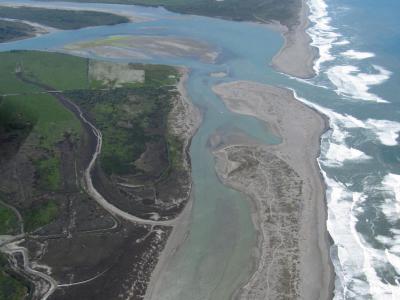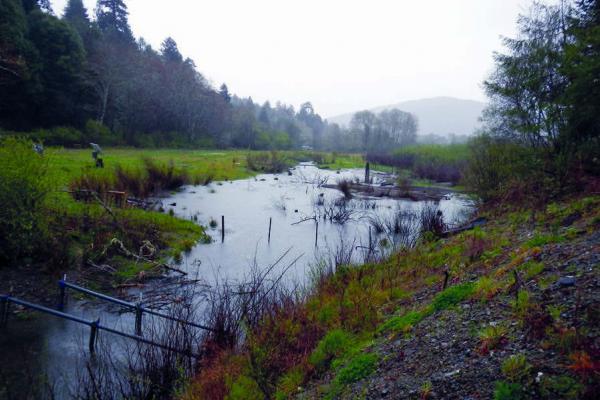Lower Klamath and Strawberry Creek Field Tour
Field Tour Coordinators:
Rocco Fiori, Fiori Geosciences
Mitch Farro, PCFWWRA
The tour will include the Strawberry Creek restoration project within Redwood National Park and adjacent private lands. This project, constructed in 2014, restores a section of backwater habitat connected to the Redwood Creek estuary. The project used an aggressive approach to control invasive reed canary grass and other invasive aquatic plants by constructing planting mounds within the wetland, and then covering them with fabric, thick mulch, and dense riparian planting to shade the open water. Post project monitoring shows improved water quality and the return of rearing coho salmon to this reach of Strawberry Creek.
The Lower Klamath portion of the tour will focus on restoring complexity and resiliency to instream and off-channel habitats to support self-maintaining salmonid populations. The Yurok Tribal Fisheries Program and its restoration partners have been using a bio-geomorphic approach that promotes the geomorphic processes necessary to form and maintain productive instream and off-channel habitat features. These techniques include: i) excavations that mimic or enhance naturally occurring valley landforms such as side-channels, alcoves, remnant oxbows and wetlands; ii) constructing log jams that provide cover, promote pool scour, sediment sorting and metering, and induce favorable hydraulics and connectivity to off- channel features; iii) constructing infiltration galleries to facilitate surface and ground water exchange that enriches dissolved oxygen levels in constructed off-channel features; and iv) bioengineering that integrates the use of willow and other riparian plants to add root cohesion, hydraulic roughness and vertical and horizontal vegetative structure and diversity to the site. On-going monitoring indicates that natal and non-natal juvenile and adult fish utilize these habitats as soon as they are available. Case examples from four different hydro-geomorphic settings will be presented that illustrate design considerations and constraints and provide associated biological and physical monitoring results.


